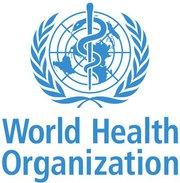In the last few weeks, the World Health Organization (WHO), released its first guidelines to digital healthcare. It is modest in its recommendations, building on where we currently are to where we might go. More importantly, I think they reflect the conservatism of clinicians as described in this quote from the introductory remarks
“This guideline urges readers to recognize that digital health interventions are not a substitute for functioning health systems, and that there are significant limitations to what digital health is able to address. Digital health interventions should complement and enhance health system functions through mechanisms such as accelerated exchange of information, but will not replace the fundamental components needed by health systems such as the health workforce, financing, leadership and governance, and access to essential medicines.”
Beginning with this preamble, they go on with more specific recommendations.
- Birth and death notifications over mobile devices
These notifications are to civil registration and vital statistics systems (CRVS), that track at all levels of government, our earthly comings and goings. In addition to serving a record-keeping role, these notifications can serve as triggers for “appropriate health and social services.” Many of these systems are already implemented at the state level, so the technology for bringing this about globally seems feasible.
- Inventory management
The supply chains of healthcare have long resisted the modernization we would expect in a world where Amazon exists. Providing a verifiable chain from manufacturer to physician or patient is only now coming into existence. But inventory control systems have been around for some time; once the hurdle of standardizing a device or medications, provenance has been addressed, this too should be a reasonably quick alteration.
- Telemedicine – Peer to peer and physician to patient
The technology exists, FaceTime brings video conversation, and there are a host of wireless medical devices, making physician to patient exchanges available, at least technically. This is even more true for discussions between clinicians, were picture archival and communicating systems (PACS) are already standard fare for sharing images and laboratory data. The difficulty with these digital initiatives is primarily regulatory. How do we guarantee patient confidentiality – a trifecta involving traceability, accountability, and security? The most significant source of privacy violations in medical information is not from outside hackers, but the insiders that are overly curious or careless.
Another regulatory hurdle comes from the fact that physicians are licensed at the state level, not nationally so that my license to practice is limited by a geographical boundary, not the scope of telemedicine. Outside physicians who wanted to help after the disasters in New Orleans and Puerto Rico were limited because their licensure and malpractice did not cover those areas. When we begin to incorporate other health professionals, like nurses, physical and occupational therapists, and so on the problem becomes even more entangled, now injecting the “scope of practice” these practitioners can legally provide. Our current credentialing system defines the scope of practice differently from state to state. This will require both legal thought and subsequent action, and a determination of what and how much these services are financially compensated; I would predict a slower rollout of these services.
- Targeted communication to patients
The current recommendations are restricted to “health issues regarding sexual, reproductive, maternal, newborn, and child health;” the management of chronic disease will follow. Once again, much of the technology is already in place, but regulatory concerns around privacy have yet to be resolved. The WHO considered several forms of this communication, more specifically, tracking patients. This is the arena that FitBit, Apple Watches, and other “wearables” are exploring; and if there is tracking of patient behavior should the monitoring be algorithmic, e.g., computerized decision support, or is that still a service to be provided by humans.
- Provision of medical education and training – mobile education
Here too, the technology is already in place; it will not be challenging to create a medicalized YouTube. But who determines and certifies the training? Continuing medical education is currently provided by medical schools, journals, and private firms. Who decides if any given “certificate of competence” is applicable? Again, these are regulatory, not technical concerns.
The limitations of digital health lie with the politics of legislation, regulation, and special interests. I return to the remarks of the authors,
“Digital health has the potential to help address problems such as distance and access, but still shares many of the underlying challenges faced by health system interventions in general, including poor management, insufficient training, infrastructural limitations, and poor access to equipment and supplies.”
If we miss the opportunity to correct these problems, as we did for electronic medical records, we will just have a more expensive system, making the same errors and creating obstacles to care, just more of them.
Source: WHO Guideline: recommendations on digital interventions for health system strengthening




